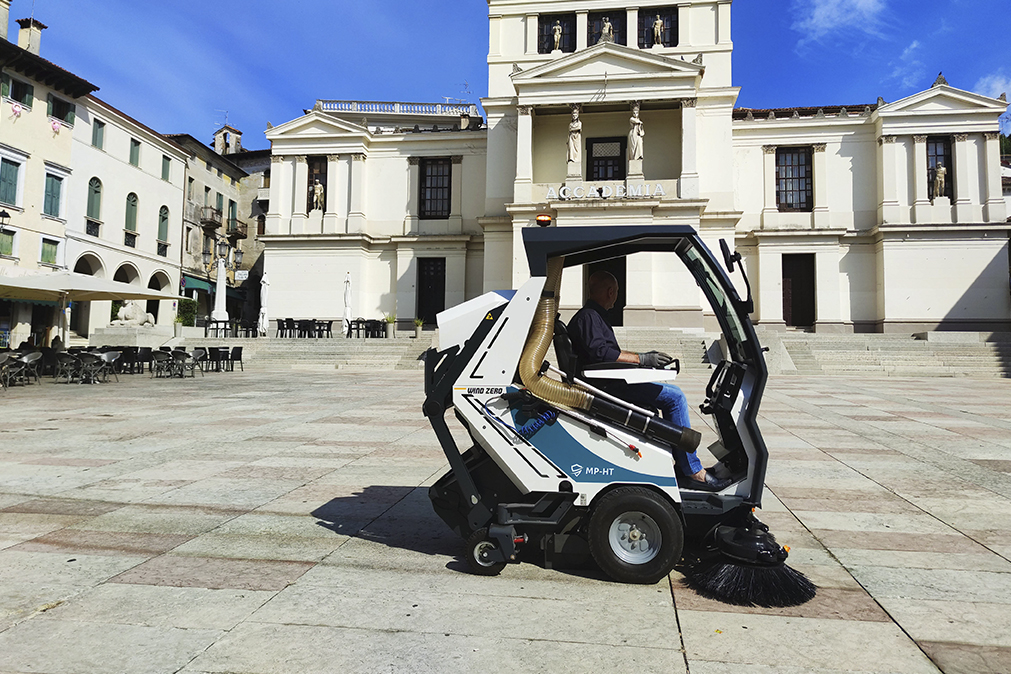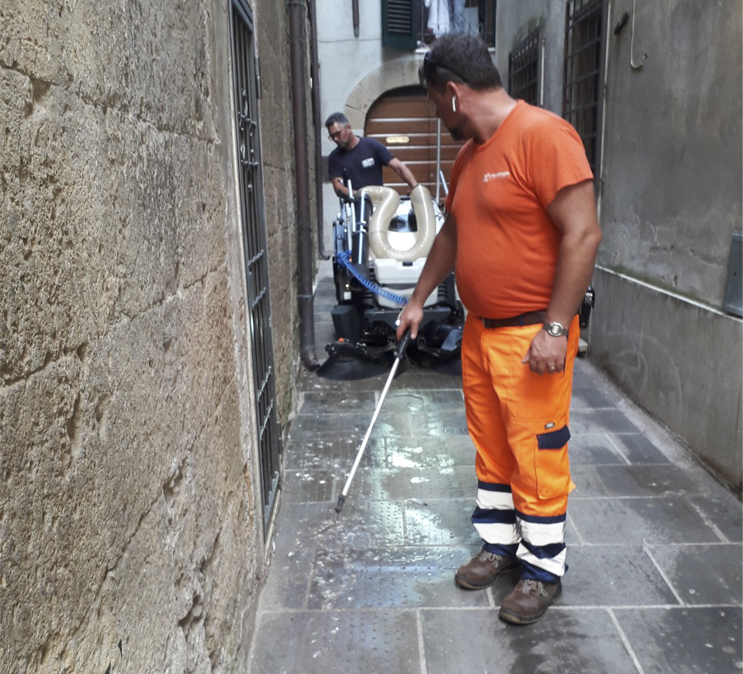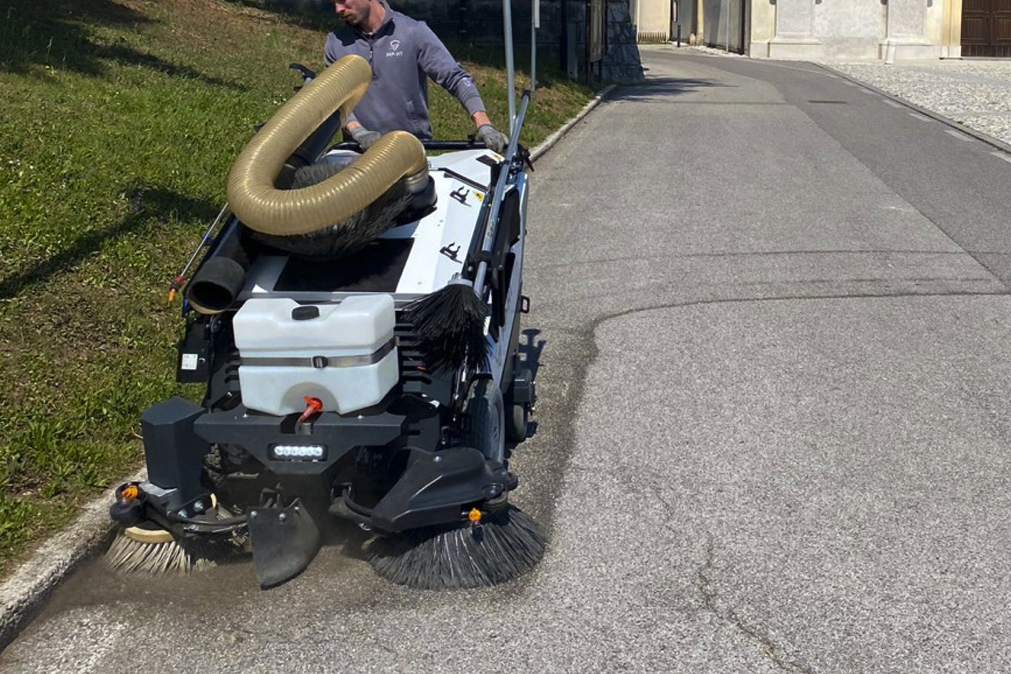
Street sweeper: operation and features
Do you want to know how a sweeper works? From collection to operating the controls, find out how it works.
Read the articleThe pigeon guano that covers the pavements of the alleys of historical centres is a widespread problem that causes major inconvenience to both businesses and inhabitants. In addition to being ugly to look at and causing an unpleasant and persistent smell, the dirt of these birds is also a vehicle for pathogens, therefore a risk factor for public health.
The guano, which has a whitish crust that encloses a compact brown/yellowish mound, is the product of the decomposition of bird droppings, which accumulates in areas where the birds stay, such as in gutters, attics, windowsills, cornices and terraces.
Although this natural substance, properly processed, is also used as a fertiliser for the cultivation of vegetable gardens and gardens, due to its chemical composition, with a prevalence of ammonia substances, it is a product with a strong erosive action, carrier of various diseases.
The negative effects of pigeon guano mainly spill over:

The proliferation of pigeons in city centres has become an increasingly important threat over the years, particularly for the preservation of historical monuments and for reasons of urban hygiene.
Pigeons, which move in flocks of more than 500 units, are sedentary animals that have found their ideal home in urban contexts, thanks to the abundant presence of food, the ideal climate and the reduced presence of other predatory animals.
Municipal administrations have the onerous task of looking for remedies both to contain the population of these birds and to clean the areas of their droppings which, as we have seen, represent a threat to buildings and human health.
The pigeon, classified as a “domestic animal”, cannot be subject to capture and extermination. To safeguard the historical heritage and the health of citizens, to contain their multiplication and reduce their presence in inhabited centres, Municipalities today act on several fronts:
The removal of guano, present outside a building and in the streets of historical centres, is a very delicate operation that requires caution. In fact, any dispersion of guano in the environment could lead to the spread of diseases.
Usually, after removal through mechanical systems, such as scraping and suction, the surfaces are disinfected with special chemicals.

A compact and fully electric machine, designed to allow frequent, rapid and meticulous cleaning of streets and pedestrian areas. With a sweeping width of 125 cm (with the two side brushes) in addition to ensuring professional mechanical sweeping even in the narrowest alleys, Max Wind allows you to effectively remove both bird guano and weeds along the edges of pavements and houses. This is thanks to the installation of a special side scraper brush.
With a single device, which is extremely easy to install and use, a double result is achieved:
Not only that, through a special washing lance it is also possible to sanitise surfaces and street furniture. In addition, thanks to the “dirt in bag” system, all waste is collected directly in a standard disposable bag positioned in the 100L collection bin, so that the operator can get rid of the collected dirt in complete safety without coming into direct contact with it.
The Max Wind street sweeper is a flexible work tool, designed to assist manual sweeping activities and allow Municipalities to guarantee daily and continuous cleaning in a simple and effective way.
In fact, frequent sweeping and cleaning of pavements, combined with actions aimed at discouraging pigeons from returning and nesting in city centres, represent a step towards solving this critical issue.